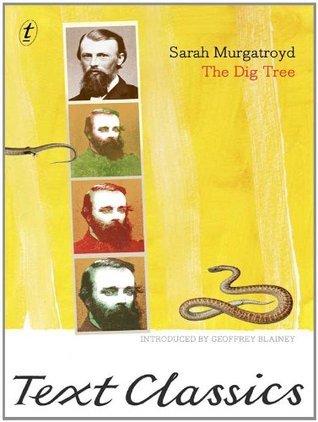What do you think?
Rate this book


In 1860, an eccentric Irish police officer named Robert O'Hara Burke led a cavalcade of camels, wagons and men out of Melbourne. Accompanied by William Wills, a shy English scientist, he was prepared to risk everything to become the first European to cross the Australian continent.
A few months later, an ancient coolibah tree at Cooper Creek bore a strange carving: 'Dig Under 3ft NW'. Burke, Wills and five other men were dead. The expedition had become an astonishing tragedy.
Sarah Murgatroyd reveals new historical and scientific evidence to tell the story of the disaster with all its heroism and romance, its discoveries, coincidences and lost opportunities. Introduced by Geoffrey Blainey and generously illustrated with photographs, paintings and maps, The Dig Tree is a spell-binding book.
Sarah Murgatroyd was born in England in 1967. In 1993 she moved to Australia with her future husband, travelling extensively, providing news and current affairs coverage for the BBC. To research The Dig Tree, Murgatroyd retraced the footsteps of Burke and Wills three times while enduring chronic pain. She died of cancer in March 2002, a few weeks after The Dig Tree was published to universal acclaim.
Geoffrey Blainey was professor of economic history and then Ernest Scott professor of history at Melbourne University. He has written more than thirty books, and many focus fully or partly on the outback.
textclassics.com.au
'Sarah Murgatroyd deftly captures the foolishness, suffering and hapless heroism of one of the 19th-century's least-known, but most epic, undertakings. I can almost guarantee that you will be biting your nails by the time you reach the Dig Tree of the title - and more than that I cannot say without spoiling this remarkable and addictive tale.' Bill Bryson
'There has been little of substance written about this expedition during the past 100 years...Sarah Murgatroyd has now entered the field and given us a book that readers will want to shout about from the hilltops. All Australian history should be this good...Readers will be totally enmeshed by Murgatroyd's story, so engaging and vivid is the writing...her evocation of the landscape and the perils faced by the explorers is luminous.' Age
'Conveys an experts grasp of her material. The Dig Tree is unlikely to be superseded...instinctive and convincing.' Times Literary Supplement
'Sarah Murgatroyd was a splendid writer. This book is a masterpiece of exploration history - entertaining, trenchant, a marvel.' National Geographic
376 pages, Kindle Edition
First published March 1, 2002